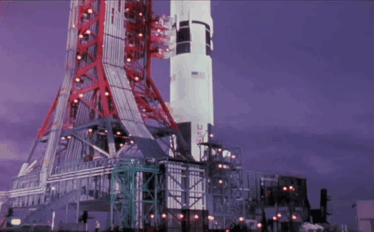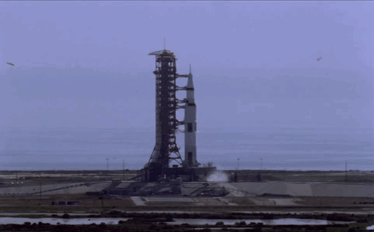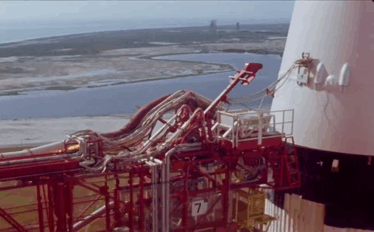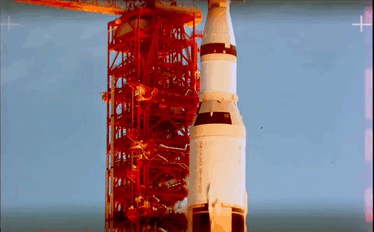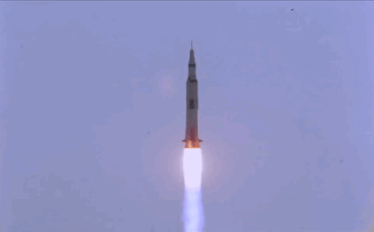2. Equating Statistical Significance With Real-world Significance

2. Equating statistical significance with real-world significance
We often hear generalisations about how two groups differ in some way, such as that women are more nurturing while men are physically stronger.
These differences often draw on stereotypes and folk wisdom but often ignore the similarities in people between the two groups, and the variation in people within the groups.
If you pick two men at random, there is likely to be quite a lot of difference in their physical strength. And if you pick one man and one woman, they may end up being very similar in terms of nurturing, or the man may be more nurturing than the woman.
You can avoid this error by asking for the “effect size” of the differences between groups. This is a measure of how much the average of one group differs from the average of another.
If the effect size is small, then the two groups are very similar. Even if the effect size is large, the two groups will still likely have a great deal of variation within them, so not all members of one group will be different from all members of another group. [full list]
More Posts from Catchconstellations-blog and Others
No pessimist ever discovered the secret of the stars, or sailed to an uncharted land, or opened a new doorway for the human Spirit.
Helen Keller

(via the-wolf-and-moon)
Solar System: Things to Know This Week
Earth is the ultimate ocean planet (that we know of), but it turns out that our solar system has water in some surprising places, with five ocean-bearing moons and potentially several more worlds with their own oceans.

1. The Original “Alien Ocean”
Our Galileo spacecraft (1989-2003) detected the first evidence of an ocean beyond Earth under the ice of Jupiter’s icy moon Europa.

2. Lost Oceans
There are signs that Mars and Venus once had oceans, but something catastrophic may have wiped them out. Earth’s natural force field – our magnetosphere – acts like shield against the erosive force of the solar wind.

3. Earth, the Original Ocean World
The search for life beyond Earth relies, in large part, on understanding our home planet. Among the newest Earth ocean explorers us the Cyclone Global Navigation Satellite System, or CYGNSS–a constellation of microsatellites that will make detailed measurements of wind speeds over Earth’s oceans to help understand hurricanes. The spacecraft have moved into their science operations phase.

4. Sister Ships
It’s fitting the first mission to explore an alien ocean is named in honor of fast-sailing clipper ships of old. Our Europa Clipper spacecraft will seek signs of habitability on Jupiter’s moon Europa.

5. Game Changer
Scientists expected Saturn’s moon Enceladus to be a tiny, solid chunk of ice and rock. But, not long after arriving at Saturn, our Cassini spacecraft made a series of incremental discoveries, eventually confirming that a global subsurface ocean is venting into space, with signs of hydrothermal activity.

6. Why Ocean Worlds Matter
“The question of whether or not life exists beyond Earth, the question of whether or not biology works beyond our home planet, is one of humanity’s oldest and yet unanswered questions. And for the first time in the history of humanity, we have the tools and technology and capability to potentially answer this question. And, we know where to go to find it. Jupiter’s ocean world Europa.” - Kevin Hand, NASA Astrobiologist

7. More Alien Oceans
Scientists think Jupiter’s giant moons Ganymede and Callisto also hide oceans beneath their surfaces. Elsewhere in the solar system, scientists hope to look for hidden oceans on far-flung worlds from Ceres in the main asteroid belt to Pluto in the Kuiper Belt.

8. Cold Faithful(s)?
Thanks to our Cassini orbiter we know the tiny moon Enceladus is venting its ocean into space in a towering, beautiful plume. The Hubble Space Telescope also has seen tantalizing hints of plumes on Jupiter’s moon Europa. Plumes are useful because they provide samples of ocean chemistry for oceans that could be miles below the surface and difficult for spacecraft to reach. It’s like they’re giving out free samples!

9. Titanic Seas and Ocean
Saturn’s moon Titan not only has liquid hydrocarbon seas on its surface. It also shows signs of a global, subsurface saltwater ocean–making the giant moon a place to possibly look for life as we know it and life as we don’t know it … yet.

10. Oceans Beyond
Several of the thousands of planets discovered beyond our solar system orbit their stars in zones where liquid surface water is possible–including Proxima-b, a rocky planet orbiting the star nearest to our own.
BONUS: Adopt a bit of YOUR Ocean World
We invite everyone to help us celebrate Earth Day 2017 by virtually adopting a piece of Earth as seen from space. Your personalized adoption certificate will feature data from our Earth-observing satellites for a randomly assigned location, much of it ocean (it is 70 percent of the Earth’s surface after all!). Print it and share it, then explore other locations with our interactive map and get even more Earth science data from NASA’s Worldview website.
Visit go.nasa.gov/adopt to adopt your piece of the planet today!
Discover more lists of 10 things to know about our solar system HERE.
Make sure to follow us on Tumblr for your regular dose of space: http://nasa.tumblr.com
A 2015 documentary on the history of space, the current progress of space exploration, and where we might go in the future.
If you have around an hour to spare, and a space itch to scratch, this is an awesome documentary to watch! It has very good scientific support, fantastic HD visuals, and exciting narration. It really opens your eyes to how much we’ve discovered only recently, and also how much we still don’t know. Great documentary!
Let me start off by saying that I think Crash Course is a great resource for people who want to get the basic details of any subject the creators offer. CC’s series for astronomy is particularly wonderful. The science behind astronomy and space can be mind-boggling due to the complexities of physics, mathematics, photonics, and other relevant subjects; CC makes it easy and fun to learn about astronomy without being too technical or in-depth. Great series of videos if you have time to check them out!
Hey Dianne. I love love love this theme! It is sooo cool. I have no idea how you did it (was it witchcraft?!?!). I love that you have this calming music playing as well. everything is just awesome --Jennifer Holden
Hi Jennifer, thank you so much for visiting my blog! The theme took forever to edit and format, but I think it’s totally worth it :D
10 Technologies That Are Changing the Game
Earlier this year, we hosted a Game Changing Technology Industry Day for the aerospace industry, and in October our engineers and technologists visited Capitol Hill showcasing some of these exciting innovations. Check out these technology developments that could soon be making waves on Earth and in space.
1. Wearable technology
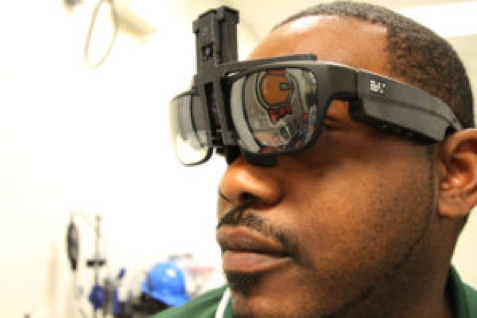
With smartwatches, glasses, and headsets already captivating users around the world, it’s no surprise that the next evolution of wearable technology could be used by first responders at the scene of an accident or by soldiers on a battlefield. The Integrated Display and Environmental Awareness System (IDEAS) is an interactive optical computer that works for smart glasses.

It has a transparent display, so users have an unobstructed view even during video conferences or while visualizing environmental data.

And while the IDEAS prototype is an innovative solution to the challenges of in-space missions, it won’t just benefit astronauts – this technology can be applied to countless fields here on Earth.
2. Every breath they take: life support technologies
Before astronauts can venture to Mars and beyond, we need to significantly upgrade our life support systems. The Next Generation Life Support project is developing technologies to allow astronauts to safely carry out longer duration missions beyond low-Earth orbit.

The Variable Oxygen Regulator will improve the control of space suit pressure, with features for preventing decompression sickness. The Rapid Cycle Amine technology will remove carbon dioxide and humidity and greatly improve upon today’s current complex system.

3. 3-D printing (for more than just pizza)
New Advanced Manufacturing Technologies (AMT), such as 3-D printing, can help us build rocket parts more quickly and aid in building habitats on other planets.

These manufacturing initiatives will result in innovative, cost-efficient solutions to many of our planetary missions. Back in 2014, the International Space Station’s 3-D printer manufactured the first 3-D printed object in space, paving the way to future long-term space expeditions.

The object, a printhead faceplate, is engraved with names of the organizations that collaborated on this space station technology demonstration: NASA and Made In Space, Inc., the space manufacturing company that worked with us to design, build and test the 3-D printer.

4. Spacecraft landing gear
Large spacecraft entering the atmosphere of Mars will be traveling over five times the speed of sound, exposing the craft to extreme heat and drag forces. The Hypersonic Inflatable Aerodynamic Decelerator (HIAD) is designed to protect spacecraft from this environment with an inflatable structure that helps slow a craft for landing.

To get astronauts and other heavy loads to the surface safely, these components must be very strong. The inflatable consists of a material 15 times stronger than steel, while the thermal protection system can withstand temperatures over 1600°C.
5. From heat shield technology to firefighter shelters

For the Convective Heating Improvement for Emergency Fire Shelters (CHIEFS) project, we partnered with the U.S. Forest Service to develop safer, more effective emergency fire shelters for wild land firefighters.

Using existing technology for flexible spacecraft heat shields like HIAD, we are building and testing new fire shelters composed of stacks of durable, insulated materials that could help protect the lives of firefighters.

6. Robots and rovers
Real life is looking a bit more like science fiction as Human Robotics Systems are becoming highly complex. They are amplifying human productivity and reducing mission risk by improving the effectiveness of human-robot teams.

Our humanoid assistant Robonaut is currently aboard the International Space Station helping astronauts perform tasks.

A fleet of robotic spacecraft and rovers already on and around Mars is dramatically increasing our knowledge and paving the way for future human explorers. The Mars Science Laboratory Curiosity rover measured radiation on the way to Mars and is sending back data from the surface.

This data will help us plan how to protect the astronauts who will explore Mars.

Future missions like the Mars 2020 rover, seeking signs of past life, will demonstrate new technologies that could help astronauts survive on the Red Planet.

7. Robotic repairs
Currently, a satellite that is even partially damaged cannot be fixed in orbit. Instead, it must be disposed of, which is a lot of potential science lost.

Satellite Servicing technologies would make it possible to repair, upgrade, and even assemble spacecraft in orbit using robotics.

This can extend the lifespan of a mission, and also enable deeper space exploration.

Restore-L, set to launch in 2020, is a mission that will demonstrate the ability to grab and refuel a satellite.
8. Low-cost spacecraft avionics controllers
Small satellites, or smallsats, are quickly becoming useful tools for both scientists and industry. However, the high cost of spacecraft avionics—the systems that guide and control the craft—often limits how and when smallsats can be sent into orbit by tagging along as payloads on larger launches.

Using Affordable Vehicle Avionics (AVA) technology, we could launch many more small satellites using an inexpensive avionics controller. This device is smaller than a stack of six CD cases and weighs less than two pounds!
9. Making glass from metal
After a JPL research team of modern-day alchemists set about mixing their own alloys, they discovered that a glass made of metal had the wear resistance of a ceramic, was twice as strong as titanium, and could withstand the extreme cold of planetary surfaces, with temperatures below -150 degrees Fahrenheit.

Bulk Metallic Glass (BMG) gears would enable mechanisms to function without wasting energy on heaters. Most machines need to maintain a warmer temperature to run smoothly, which expends precious fuel and decreases the mission’s science return.

By developing gearboxes made of BMG alloys, we can extend the life of a spacecraft and learn more about the far reaches of our solar system than ever before. Plus, given their extremely high melting points, metallic glasses can be cheaply manufactured into parts by injection molding, just like plastics.
10. Lighter, cheaper, safer spacecraft fuel tanks
Cryogenic propellant tanks are essential for holding fuel for launch vehicles like our Space Launch System—the world’s most powerful rocket. But the current method for building these tanks is costly and time-consuming, involving almost a mile of welded parts.

Advanced Near Net Shape Technology, part of our Advanced Manufacturing Technologies, is an innovative manufacturing process for constructing cryotanks, using cylinders that only have welds in one area.

This makes the tank lighter, cheaper, and safer for astronauts, as there are fewer potentially defective welds.
Follow us on Tumblr for your regular dose of space: http://nasa.tumblr.com
List of Online Resources
Over the past week I’ve been compiling a short list of online resources I often use when I’m doing anything space-related online, whether it be writing summaries of news updates or trying to understand some complicated science topic. Hope these are useful!
On getting up-to-date news:
ScienceDaily
Space.com
Science Mag
On understanding scientific topics:
Crash Course
Khan Academy
Space Exploratorium
Of course, there are many resources out there, but these are the ones I use most often.

-
 aerietoe liked this · 5 years ago
aerietoe liked this · 5 years ago -
 adamwoo reblogged this · 7 years ago
adamwoo reblogged this · 7 years ago -
 theskyexists liked this · 7 years ago
theskyexists liked this · 7 years ago -
 adulterclavis reblogged this · 7 years ago
adulterclavis reblogged this · 7 years ago -
 direvampire liked this · 7 years ago
direvampire liked this · 7 years ago -
 jezebelgoldstone liked this · 7 years ago
jezebelgoldstone liked this · 7 years ago -
 madamebustybrenda liked this · 7 years ago
madamebustybrenda liked this · 7 years ago -
 meiyaru liked this · 7 years ago
meiyaru liked this · 7 years ago -
 nonscienceinc reblogged this · 7 years ago
nonscienceinc reblogged this · 7 years ago -
 nonscienceinc liked this · 7 years ago
nonscienceinc liked this · 7 years ago -
 specsthespectraldragon liked this · 7 years ago
specsthespectraldragon liked this · 7 years ago -
 intelegencesector reblogged this · 7 years ago
intelegencesector reblogged this · 7 years ago -
 intelegencesector liked this · 7 years ago
intelegencesector liked this · 7 years ago -
 thecuckoohaslanded reblogged this · 7 years ago
thecuckoohaslanded reblogged this · 7 years ago -
 henpeckedho reblogged this · 7 years ago
henpeckedho reblogged this · 7 years ago -
 lesbiansandpuns reblogged this · 7 years ago
lesbiansandpuns reblogged this · 7 years ago -
 jatakkformaten-blog liked this · 7 years ago
jatakkformaten-blog liked this · 7 years ago -
 illuminatetheworldwithtruth reblogged this · 7 years ago
illuminatetheworldwithtruth reblogged this · 7 years ago -
 cptgreentea-blog liked this · 7 years ago
cptgreentea-blog liked this · 7 years ago -
 lovevida96 liked this · 8 years ago
lovevida96 liked this · 8 years ago -
 rorzathoth reblogged this · 8 years ago
rorzathoth reblogged this · 8 years ago -
 balmainandboujee liked this · 8 years ago
balmainandboujee liked this · 8 years ago -
 chainsawfuckersanonymous liked this · 8 years ago
chainsawfuckersanonymous liked this · 8 years ago -
 gcnderfuckarchive reblogged this · 8 years ago
gcnderfuckarchive reblogged this · 8 years ago -
 642sixx reblogged this · 8 years ago
642sixx reblogged this · 8 years ago -
 princeofsudan liked this · 8 years ago
princeofsudan liked this · 8 years ago -
 foreverfreo liked this · 8 years ago
foreverfreo liked this · 8 years ago -
 transposed-rodent liked this · 8 years ago
transposed-rodent liked this · 8 years ago -
 andreasrork liked this · 8 years ago
andreasrork liked this · 8 years ago -
 run-with-me-to-the-sea liked this · 8 years ago
run-with-me-to-the-sea liked this · 8 years ago -
 smallrailwaytowns reblogged this · 8 years ago
smallrailwaytowns reblogged this · 8 years ago -
 diaryofacomicbookgoddess reblogged this · 8 years ago
diaryofacomicbookgoddess reblogged this · 8 years ago -
 izmarooned reblogged this · 8 years ago
izmarooned reblogged this · 8 years ago -
 izmarvelous liked this · 8 years ago
izmarvelous liked this · 8 years ago -
 drrrling liked this · 8 years ago
drrrling liked this · 8 years ago -
 peyretal liked this · 8 years ago
peyretal liked this · 8 years ago -
 zombieofdrake liked this · 8 years ago
zombieofdrake liked this · 8 years ago -
 grimpsychoanalyst liked this · 8 years ago
grimpsychoanalyst liked this · 8 years ago -
 standardshgffv reblogged this · 8 years ago
standardshgffv reblogged this · 8 years ago -
 fakegirl101 liked this · 8 years ago
fakegirl101 liked this · 8 years ago -
 dariospeedwagon liked this · 8 years ago
dariospeedwagon liked this · 8 years ago
CONSTELLATION: (noun) Group of stars that form a recognizable pattern to which a mythological or earth-based name is assigned Pattern of stars whose name or is associated with different stories and meanings Story told by stars connected across the infinite night sky, overlapping with countless other stories that have unfolded from ancient supernovas, whose imaginary lines urge our eyes up from the chaos of the world around us to the unknown vastness in which we are but a speck of dust -------- Hi! I’m a starry-eyed astrogeek named Dianne who loves absolutely everything that has to do with the stars and outer space. When I’m not studying or preparing to take over NASA one day, you can find me trying to stargaze despite city lights or happily planning my next road trip.
35 posts

